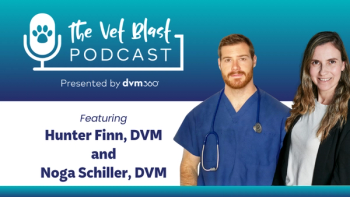
The role of nutrition in critical care patients
Ensuring patients receive appropriate feeding is essential to their recovery.
According to Kara Burns, MS, MEd, LVT, VTS (nutrition), VTS-H (internal medicine, dentistry), inadequate nutrition in critical care patients further complicates management of their underlying condition. This population requires daily nutrients to maintain optimal immune function, tissue synthesis, tissue repair, and proper drug metabolism. During her lecture at the virtual North American Veterinary Community (NAVC) Veterinary Meeting & Expo (VMX), she expanded upon the importance of nutrition in critical care patients and outlined tips for addressing their needs.
Before beginning feeding
Burns advised that before beginning to feed patients, ensure that they are stable and not in shock because that will decrease gastrointestinal (GI) perfusion, and has the potential to increase other complications. The patient should also be well hydrated. Electrolytes should be monitored before feeding and throughout the process.
Early enteral and semi-elemental nutrition
Incorporating enteral nutrition as quickly as possible promotes early recovery and this can be accomplished by providing an antiemetic drug on admission. Some benefits of this method include decreasing cytokine production, modulating acute phase response, reducing catabolism, preserving protein, and stimulating the regeneration of the intestinal mucosa.
“In these [critical] patients, early nutritional support is essential because we know that feeding spares endogenous proteins, which is critical to successful outcomes,” said Burns.
Burns recommended a semi-elemental diet because it is easily absorbed and digested by the GI tract. This monomeric feeding uses small molecular weight compounds for nutrients, so the tract doesn’t have to expend substantial energy to break them down.
“An emergency and critical care patient has no energy to spare, so that energy is better served in healing the rest of the body and repairing itself,” Burns shared.
Nourish the GI tract
When an animal is critically ill, the body’s main goal is to support key organs including the heart, brain, liver, and lungs so that blood flow to the GI tract is reduced, which then in turn slows GI motility or movement. Therefore, maintaining the health and function of the GI tract and its enterocytes is especially vital in these patients, according to Burns.
“The GI tract is lined with cells called enterocytes. Those enterocytes help digest, absorb, and transport a large variety of nutrients into the body. Important nutrients absorbed by enterocytes include the building blocks of protein, which are peptides, carbohydrates, saccharides, fats or lipids, water, vitamins, and those ions or minerals,” Burns said.
When prioritizing enterocyte health, veterinarians provide the maximum absorbable nutrients in the GI tract. Additionally, enterocytes form a tight seal to protect the body from harmful bacteria or toxins, ergo this is advantageous for critical care patients as well.
Feeding tubes
Burns urged attendees to use feeding tubes in critical condition patients. “Feeding tubes save lives, but they are not used as often as they should be,” she said.
The types of feeding tubes include nasoesophageal/nasogastric tubes, esophagostomy tubes, gastrostomy tubes, and jejunostomy tubes. Each one serves its own function and can be used based on a patient’s anesthetic needs, duration of feeding needs, placement needs, and beyond.
Though complications involving feeding tubes are rare, some to be mindful of are aspiration, dislodging, vomiting, blockage, and infections (especially Stoma infections), according to Burns.
Take-aways
Burns concluded the presentation by summarizing that poor nutrition results in poor outcomes, early enteral and semi-elemental feeding leads to early recovery, and feeding tubes save lives. Though it often isn’t the priority when a patient is in critical condition, ensuring they receive proper nutritional intake is key to their recuperation.
Reference
Burns K. Nutrition in critical care. Presented at: Veterinary Meeting and Expo; virtual. January 16, 2022.
Newsletter
From exam room tips to practice management insights, get trusted veterinary news delivered straight to your inbox—subscribe to dvm360.





